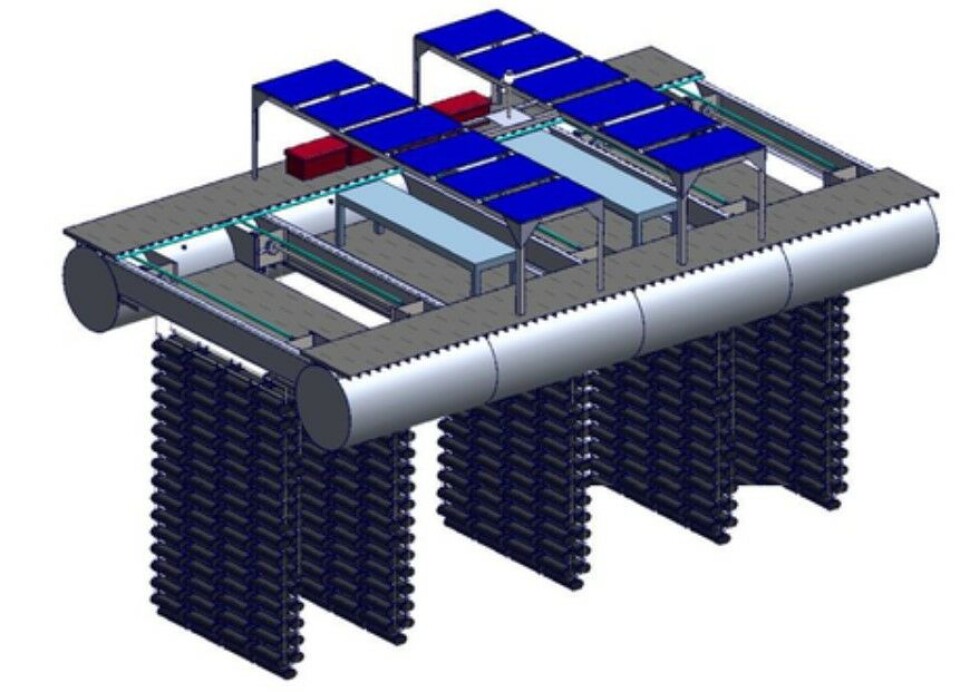
Rotating ladder system offers more oysters in less space
US company’s platform-based farm is also said to produce more consistent results
A batch of 356,600 oysters grown in a solar-powered rotating basket system mounted on a floating platform has been placed on a restoration reef in Chesapeake Bay on the east coast of the United States.
The oysters were placed as spat in the Solar Oyster Production System (SOPS) in Baltimore Harbour eight months ago, and have thrived, according to Solar Osyters LLC, which has developed the system. While survival rates on oyster farms can vary drastically, survival rates of over 90% have been observed consistently on SOPS.
Baskets mounted on underwater “ladders” are fully rotated every 24 hours, including a period out of the water, by an automated system powered with energy from solar panels. The current compact design can produce up to 250,000 oysters in a 0.02-acre space compared to multiple acres used in traditional oyster farming on the Chesapeake Bay, said SOPS.

The company said that by rotating vertically through the water column, oysters have access to more abundant food sources and exposure to sunlight when out of the water for periods of time to reduce fouling.
Increased survival
“This technology has the potential to shift the oyster aquaculture industry by reducing labour while producing healthy oysters for both restoration and consumption. The Solar Oyster Production System’s automatic oyster cage rotation system dramatically increased oyster survival versus oysters sitting stationary,” said SOPS platform manager Emily Caffrey, who highlighted oysters’ ability to filter impurities from water.
“The more oysters that can be grown, the faster we can improve the bay’s water quality, and oyster farmers will have more product to sell at market,” she added.
The oyster project is being carried out in partnership with the Chesapeake Bay Foundation (CBF) and with funding from the Abell Foundation. The Chesapeake Bay Foundation and the Chesapeake Oyster Alliance want to add 10 billion oysters to Chesapeake Bay by 2025.
The 200-mile-long bay was once known for both its beauty and bounty but has had fewer crabs and oysters since the mid-20th century. Nutrient pollution and urban runoff have been identified as major components of impaired water quality in the bay stressing ecosystems and compounding the decline of shellfish due to overharvesting. Restoration efforts that began in the 1990s have continued into the 21st century and show potential for growth of the native oyster population.
“New technologies such as SOPS give us the ability to think innovatively and increase oyster production to help us achieve this goal. Over the past two years, we were able to increase the numbers of oysters grown in Baltimore Harbour by more than 60% by working with Solar Oysters,” said CBF’s oyster restoration coordinator Kellie Fiala.
Solar Oysters said it is continuing to refine its technology to maximise oyster quality and output. The SOPS technology is being marketed to those interested in oyster restoration and aquaculture farming for consumption.























































